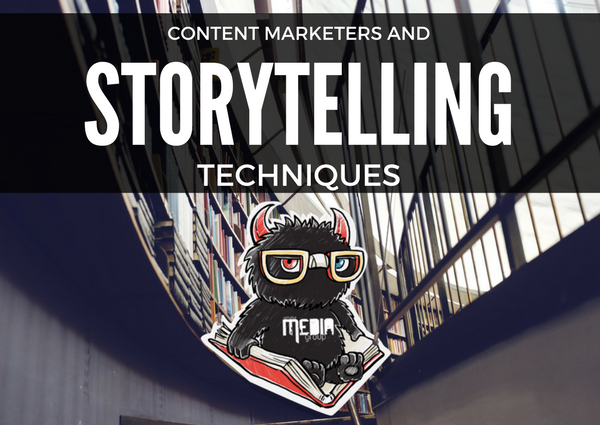Why should B2B Content Marketers Also Use Storytelling Techniques?
 https://www.omahamediagroup.com/images/uploads/monster_gallery/Omaha-Media-Group-Black.jpg
https://www.omahamediagroup.com/images/uploads/monster_gallery/Omaha-Media-Group-Black.jpg

Why is it necessary?
Although there is a fundamental difference between B2B and B2C marketers insofar as the target audience is different, the expectations are slightly different, the fact that businesses need hard proof and don’t always need a narrative or a background story while individuals love emotive stories. However, at the end of the day both the end targets are humans and humans love stories!
Stories needn’t be without a proper context, without support of hard facts, data and numbers or completely devoid of jargons, technical explanations but the thread used to bind together the different information to create one coherent piece should be a nice, juicy story about your brand or an aspect of your business or an important personality.
Ultimately marketing is a form of communication. In order to make your message memorable, there is no better alternative to a story that explains a series of events logically in a manner that effuses enthusiasm and excitement. That is how even dour and dull technical reviews and pieces full of numbers and statistics can be made interesting enough so that they go viral in a matter of minutes.
While B2B marketing prospects are fact-focused, data shows that almost 95% employ search tools to identify the products or brands that offer a solution that fits the problem. Very often, a prospect doesn’t have the exact key to a door. They keep trying a number of keys from a bunch and choose one that fits the hole perfectly.
But, you have to be the key that glows in the dark. You have to lure the prospect. He should at least consider your proposal and give you a chance to convince him why your offer is the most suitable for his requirement.
So, in order to differentiate your content from listless and dull ones, you should employ story telling techniques without compromising on objectivity and factual accuracy.
How can you make your brand story interesting?
Every content marketer worth his salt knows that whether it is a B2B or a B2C buyer persona, they love a rational narrative. A B2B marketer can create great content even if he feels that he has a boring product or service to market.
However, there is a second category that feels that it is not possible because the customer testimonials don’t seem inspiring or exceptional. The email list consists of business executives who don’t seem to show excitement for a great story and are only asking for case studies, white papers and ROI. If you belong to the second category, you need a rethink.
An interesting narrative needs six basic storytelling elements. It needs a plot which is a sequence of events that takes the story forward, a setting or a context under which the story is being narrated and includes the place and time and also the reason for sharing the story, a perfect atmosphere which sets the tone of the story and helps you tweak the emotions of the audience, a character who is usually the hero or the villain for whom the audience shows interest roots for or dislikes, a point of view i.e. a voice through which the author controls his proximity to the series of events and a conflict i.e. the actual problem that your brand or product solves.
Use data- statistical, visual, counterintuitive, contextual, trending, etc to set the mood, establish the conflict and also solve the problem. Don’t let the lack of appeal or glamour cow you down. Focus on the deliverables and how you can communicate them interestingly. If you are talking about boilers, say why it is appropriate and share a story to show how your boilers solved similar problems for a business similar to the scale of this business. That is how you can take the narrative forward and keep it fresh and engaging.
Let us help you create a personal marketing strategy geared towards storytelling! {contact-us}


























